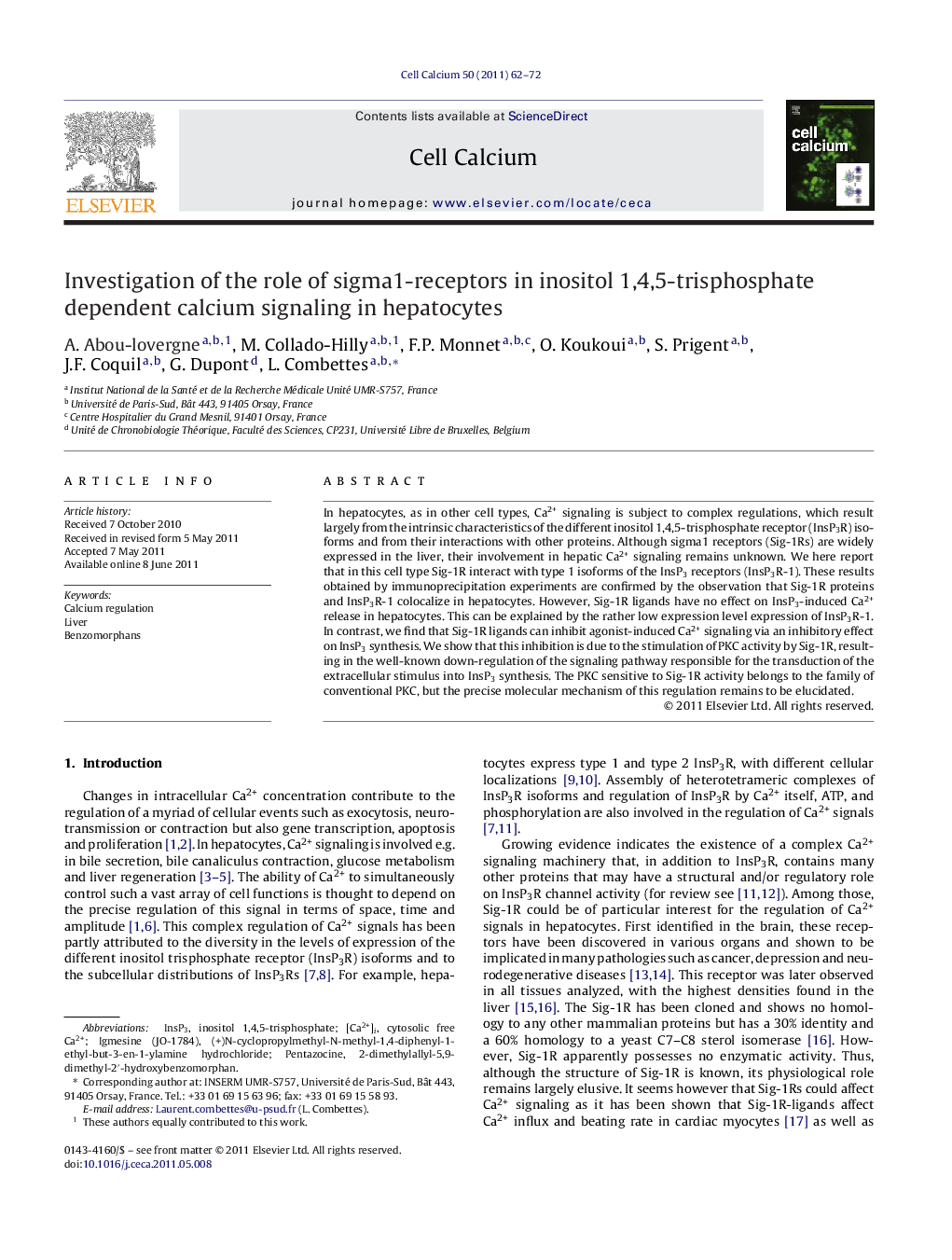| Article ID | Journal | Published Year | Pages | File Type |
|---|---|---|---|---|
| 2166234 | Cell Calcium | 2011 | 11 Pages |
In hepatocytes, as in other cell types, Ca2+ signaling is subject to complex regulations, which result largely from the intrinsic characteristics of the different inositol 1,4,5-trisphosphate receptor (InsP3R) isoforms and from their interactions with other proteins. Although sigma1 receptors (Sig-1Rs) are widely expressed in the liver, their involvement in hepatic Ca2+ signaling remains unknown. We here report that in this cell type Sig-1R interact with type 1 isoforms of the InsP3 receptors (InsP3R-1). These results obtained by immunoprecipitation experiments are confirmed by the observation that Sig-1R proteins and InsP3R-1 colocalize in hepatocytes. However, Sig-1R ligands have no effect on InsP3-induced Ca2+ release in hepatocytes. This can be explained by the rather low expression level expression of InsP3R-1. In contrast, we find that Sig-1R ligands can inhibit agonist-induced Ca2+ signaling via an inhibitory effect on InsP3 synthesis. We show that this inhibition is due to the stimulation of PKC activity by Sig-1R, resulting in the well-known down-regulation of the signaling pathway responsible for the transduction of the extracellular stimulus into InsP3 synthesis. The PKC sensitive to Sig-1R activity belongs to the family of conventional PKC, but the precise molecular mechanism of this regulation remains to be elucidated.
